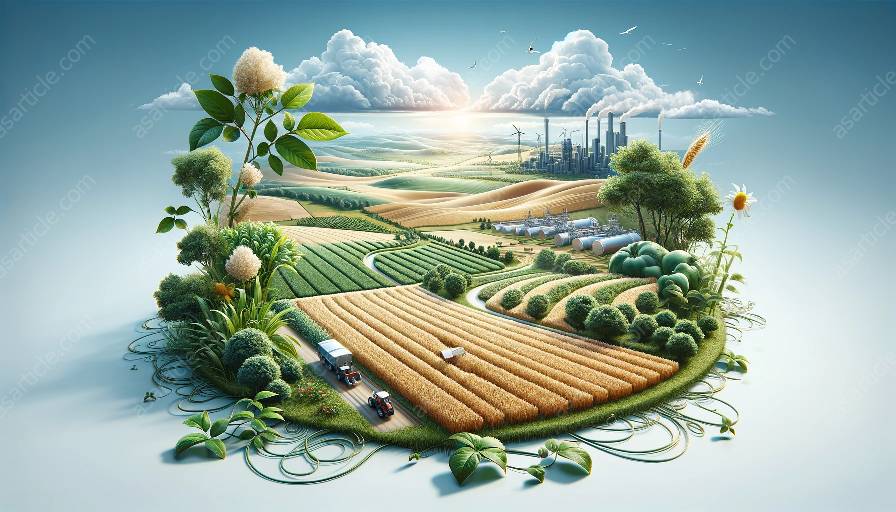Agricultural biodiversity is crucial for sustainable food production, and wild relatives of crop species play a significant role in maintaining this diversity. In the context of agricultural sciences, understanding and conserving these wild relatives is essential for ensuring the resilience of our food systems.
The Significance of Wild Relatives
Wild relatives of crop species refer to the closely related plants that share genetic similarities with cultivated crops. These wild relatives are valuable genetic resources that can be utilized to improve the traits of domesticated crops, such as disease resistance, tolerance to environmental stress, and nutritional quality.
Conserving these wild relatives is critical for ensuring the long-term sustainability of agriculture. As the world faces various challenges, including climate change, pests, and diseases, harnessing the genetic diversity present in wild relatives can help us develop more resilient and adaptable crop varieties.
By understanding the genetic makeup of wild relatives and their relationships with cultivated crops, agricultural scientists and breeders can identify and transfer beneficial traits to improve crop performance.
Linking Agricultural Biodiversity and Agricultural Sciences
Agricultural sciences encompass various disciplines, including genetics, plant breeding, ecology, and agronomy. By studying the wild relatives of crop species, scientists can gain insights into the evolutionary processes that have shaped these plants and understand how their genetic diversity can be harnessed for agricultural and environmental purposes.
In the realm of agricultural biodiversity, the preservation and study of wild relatives contribute to the broader goal of maintaining a diverse and resilient agricultural ecosystem. This diversity not only provides options for crop improvement but also supports ecosystem services, such as pollination, pest control, and soil fertility.
The conservation of wild relatives is an integral part of agricultural biodiversity, as it ensures the availability of genetic resources for future agricultural innovations and adaptations.
Challenges and Conservation Efforts
Despite their significance, many wild relatives of crop species are under threat due to habitat loss, climate change, and human activities. Conservation efforts are vital to safeguarding these valuable genetic resources and the ecosystems they inhabit.
Collaborative initiatives involving governments, research institutions, and conservation organizations are working to identify, protect, and manage wild relatives in their natural habitats and gene banks. These conservation strategies aim to ensure the continued availability of these genetic resources for future generations.
Furthermore, raising awareness about the importance of wild relative conservation and promoting sustainable agricultural practices are essential components of ensuring the continued coexistence of wild relatives and agricultural biodiversity.
Conclusion
The exploration of wild relatives of crop species offers a fascinating glimpse into the interconnectedness of agricultural biodiversity and agricultural sciences. As we strive to enhance food security, adapt to changing environmental conditions, and improve agricultural sustainability, understanding and conserving the genetic wealth found in wild relatives is paramount.
By recognizing the value of wild relatives and embracing collaborative conservation efforts, we can contribute to the resilience and adaptability of our agricultural systems, ultimately benefitting both current and future generations.

